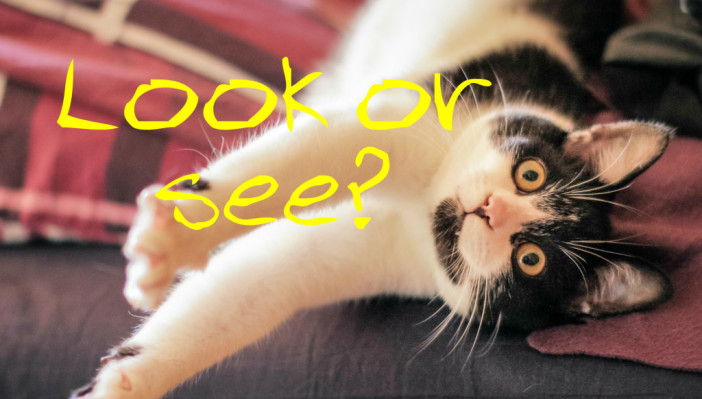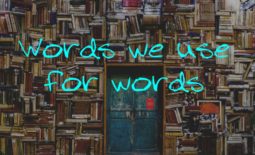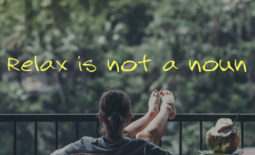Look or see?
Two words that are commonly confused in English are look and see.
To see usually implies a more strictly physical way of using your eyes. For example, you use glasses or contact lenses so you can see better. When you go to the eye doctor, he or she asks if you can see certain letters. You look in a mirror and you see your reflection. Some common expressions that use see include:
See you later! (It’s very likely that you will be meeting your friend in the near future.)
See you around! (This is more vague; maybe you will run into your friend at some point.)
I see! (You understand something.)
We’ll see. (Often used by parents to put off making a decision. Child: Mom, can we get a dog? Mom: We’ll see.)
I’m seeing a doctor about my problem. I need to see a doctor about this problem.
I’m seeing someone. (Usually this means that you are in a relationship with someone else.)
To look usually implies a more focused way of using your eyes. Here’s an example:
I see some birds outside. (They are there, and I see them, but I am not really interested in them.)
My cat is looking at some birds. (They are there, my cat sees them, and she is very interested in them.)
Notice that to see is most often used in a simple rather than progressive tense, while to look is often used in a progressive tense. For example:
I see some birds over here. Yesterday, I saw some birds over there.
My cat is looking at the birds. Yesterday, she was looking at them for hours.
The verb to look is often followed by a preposition that changes its meaning. These sentences contain phrasal verbs with look:
Can you look at my website and tell me what you think?
I need to look over my notes before I give my speech.
Look out! You almost got hit by that car!
I need to look up that word in a dictionary.
Our boss looks down on the employees and doesn’t treat them very well.
I’m getting fat. I need to look into joining a gym.
I’m going to look around for a good deal before I buy a car.
She’s always looking for a good deal.
My grandmother looked after me when I was little.
You need to look ahead and plan for your future.
I’m looking forward to seeing that movie.
Another way that English speakers use these verbs is as an exclamation or interjection. For example:
See, I told you he wouldn’t do a good job!
Look, how many times do I have to ask you to take out the garbage?
In these cases, look and see are virtually interchangeable. They are used to draw your listener’s attention to what you are saying.
Finally, what about the verb to watch? Watching also involves your eyes, but now you are using them not just physically and attentively, but for a longer period of time. For example, you watch a movie or a TV show. People who are interested in birds are called “birdwatchers.” Some people like to go to a mall or park and “people watch.” In the 1960s, there was even a rock group that sang a song, I’m a Girl Watcher. Sometimes, watch and look are used in almost the same way. For example, if someone is in danger, you might call out, “Watch out!” or “Look out!”
How can you learn the difference between these words? Watch movies in English. Look at English websites on your computer. See how many times you can find these words in use.




